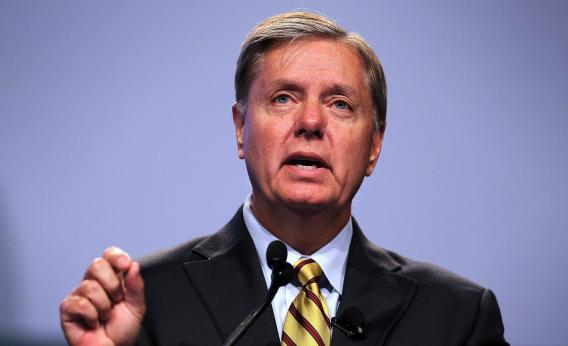Over the weekend on Face The Nation, Lindsey Graham (R-SC) begged the president to endorse the Simpson-Bowles plan (emphasis added):
“Say yes to Simpson-Bowles, Mr. President. I’m willing to say yes to Simpson-Bowles,” Graham said. Graham said Washington needs more revenue, but that the revenue should come from closing tax loopholes and deductions for the rich, not from raising tax rates. “Mr. President, if you will say yes to Simpson-Bowles when it comes to revenue, so will I and so will most Republicans. We can get revenue without destroying jobs,” Graham said.
I can never tell if the reason so few people understand the content of the Simpson-Bowles plan is that Simpson and Bowles themselves are dishonest or just extraordinarily bad at explaining their own work, but this simply isn’t how the plan works. To understand the math of the Simpson-Bowles proposal you have to understand that they start from the baseline assumption that Obama gets his way on income taxes:
Second, when the Bowles-Simpson plan listed the savings that its proposed policies would achieve, it used a revenue baseline that assumed that the tax cuts President Bush and Congress enacted in 2001 and 2003 would expire for incomes over $250,000 for couples ($200,000 for singles). After Bowles and Simpson issued their plan (and starting with the budget negotiations of 2011), policymakers of both parties decided to measure revenue changes from a different, “current policy,” baseline — i.e., a baseline that assumes that policymakers would extend all of the Bush tax cuts and almost all other expiring tax provisions.
Get it? The way this works is that they start from the assumption that tax rates on the rich go up, and then from that new higher baseline they raise even more revenue through base-broadening reform paired with rate cuts. What’s more, of the $2.1 trillion in discretionary cuts they proposed $1.5 trillion have already been enacted.
Summed up, this is another reason for Obama to call John Boehner’s bluff. Simpson and Bowles didn’t use that baseline for no reason. They use that baseline because they know it’s much simpler to get Republicans to agree to a mathematically workable tax plan when you lock that baseline in. Mitt Romney just tried to run an entire presidential campaign based in tax reform assuming the current policy baseline and we saw over and over again that he couldn’t make it work. But in terms of effect, both the Romney plan and the Simpson-Bowles plan are the same. You cut rates and broaden the base. Where this gets you numbers-wise all comes down to the baseline. Obama can unilaterally set a new baseline that’s more favorable to reform, and he should.
